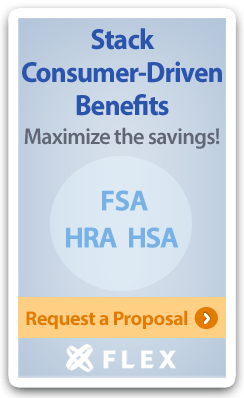Benefits Buzz
Proposed Rule for Employers with Unconditional Opt-Out Arrangements
Posted on August 22nd, 2016

By now, you’ve probably heard about the Employer Mandate on several different occasions. Without reiterating all of the specific details, applicable large employers (ALEs) must offer health insurance coverage to full-time employees that has minimum value and is considered affordable or risk paying penalties.
However, there is a new twist that has been proposed by the Internal Revenue Service (IRS) in calculating whether coverage is considered affordable. Before we get into that, let me remind you that in 2016 coverage is considered affordable if an employee has to pay no more than 9.66% (inflation-adjusted each year) of their household income for the lowest priced health plan (using the self-only rate) available to them with minimum value. Employers who don’t know household income can alternatively base affordability on the employee’s current year W-2 wages, their monthly rate of pay, or in relation to mainland federal poverty level.
For most employers, they’ve simply been able to look at what the employee’s share of premium is for the cheapest plan they offer and determine if coverage is affordable from there….but that’s going to be changing for some employers who have “opt-out arrangements” in place. An opt-out arrangement can generally be described as cash that’s provided to employees who waive coverage offered by the employer.
The proposed rules indicate that some opt-out payments must be included in determining the affordability of coverage. For example, if the least expensive plan offered would cost an employee $100/month, but the employer would offer employees who waive coverage $50/month in extra income, then the employee contribution would be considered $150/month for purposes of determining affordability. The logic behind the proposed rule is that if an employee enrolled in coverage they would have to forego additional compensation.
This new rule would only apply to “unconditional” opt-out arrangements which are those that only condition the opt-out payment upon an employee waiving coverage. The rule would not apply to “conditional” or “eligible” opt-out arrangements where the opt-out payment is only made to:
- Employees who waive coverage; and
- The employees waiving coverage provide reasonable evidence that they (and all other individuals for whom the employee reasonably expects to claim a personal exemption deduction) have or will have minimum essential coverage, although coverage obtained in the individual marketplace is not considered an acceptable form of other coverage for this purpose.
The proposed rule, if finalized, would generally take effect for plan years beginning on or after January 1, 2017. However, as eluded in previous guidance issued at the end of 2015 and confirmed in the recently proposed guidance, the rule would take effect for periods after December 16, 2015 if the opt-out arrangement was adopted after that date.
Employers with opt-out arrangements will need to evaluate the new rules to determine how it impacts them. Additionally, ALEs with unconditional opt-out arrangements will need to include the opt-out payment when reporting the appropriate premium amount on Line 15 of Form 1095-C which is used to enforce the Employer Mandate.
Subscribe to this blog at the top left navigation by entering your email address to learn more with Flexible Benefit Service LLC (Flex).
The materials contained within this communication are provided for informational purposes only and do not constitute legal or tax advice.

